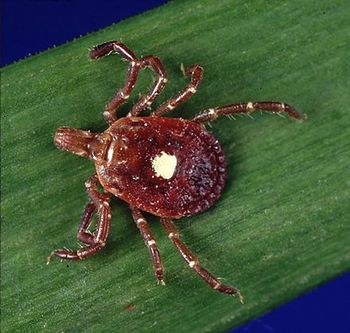
Top 5 Infectious Disease News of the Week—February 18, 2018
Stay up-to-date on the latest infectious disease news by checking out our top 5 articles of the week.
#5: With PrEP, Daily Dosing May Not Be Necessary
Since its introduction several years ago, doctors typically have recommended that pre-exposure prophylaxis, or PrEP, be taken daily by high-risk individuals in order to prevent the transmission of HIV. This two-medication combo can reduce the risk of contracting HIV by more than 90% on its own; combined with the use of condoms, the transmission rate is even lower. But does PrEP actually have to be taken on a strict once-a-day schedule? No, according to several studies.
One study, known as the Alternative Dosing to Augment PrEP Pill Taking (ADAPT) study, found that individuals who are given appropriate support can have excellent results with non-daily PrEP dosing schedules. The ADAPT study, conducted by researchers in the United States and Thailand between 2012 and 2014, involved 357 men—both cisgender and transgender—who have sex with men. Half were enrolled through a community clinic and clinical research site in Bangkok and the other half were enrolled through a clinical research site in Harlem, a traditionally African American enclave in upper Manhattan. The men were randomly assigned to take either 1 PrEP tablet daily, 1 tablet twice a week along with a post-sex dose, or 1 tablet before and 1 after sex.
Read more about
#4: First Report of Human Infected with Cattle Eyeworm
A recent report documents the first recorded case of a human infestation with the cattle eyeworm Thelazia gulosa.
Richard S. Bradbury, PhD, from the Centers for Disease Control and Prevention (CDC), Atlanta, Georgia, and colleagues published their case report online on February 12, 2018, in the American Journal of Tropical Medicine and Hygiene.
Thelazia species of eyeworms are relatively common veterinary parasites that infect animals in many countries, including the United States. Different species of these parasites may infect different animal species, such as horses, cattle, dogs, cats, pigs, sheep, goats, and birds.
Read more about
#3: Multidrug-Resistant Pseudomonas aeruginosa Infections: Hard to Treat, But Hope on the Horizon?
Pseudomonas aeruginosa (P. aeruginosa) is an aerobic, gram-negative bacilli that can be found ubiquitously in soil, plants, and hospital reservoirs of water, including showers, sinks, and toilet water.1 A recent report from the National Healthcare Safety Network, summarizing the health care-associated infections from 4515 US hospitals from 2011 to 2014, reported to be the sixth most common nosocomial pathogen overall and second most common pathogen in ventilator-associated pneumonia (VAP) in US hospitals.2
On a national level, P. aeruginosa was found to have resistance or intermediate susceptibility to at least 1 carbapenem in 19.3% (4365/22,593) of isolates, resistant to at least 1 aminoglycoside in 9.7% (2631/27,197) of isolates, resistant to either cefepime or ceftazidime in 10.3% of isolates (2763/26,772) resistant to at least 1 fluoroquinolone in 21.6% (5808/26,897) of isolates, resistant to piperacillin/tazobactam in 10.0% (2378/23,662) of isolates, and multidrug resistant (MDR) in 14.2% (3871/27,289) if isolates.3
Read more about
#2: Once-Daily Fixed-Dose HIV Combo Drug From Mylan NV Receives Tentative Approval from FDA
Mylan NV has announced that is its New Drug Application (NDA) for the once-daily, fixed-dose combinations of dolutegravir, emtricitabine, and tenofovir alafenamide Tablets, 50 mg/200 mg/25 mg has received tentative approval from the US Food and Drug Administration (FDA) under the US President's Emergency Plan for AIDS Relief (PEPFAR). The antiretroviral (ARV) will be immediately available in developing countries as a first-line regimen for people being treated for HIV/AIDS.
"The FDA's tentative approval of Mylan's Dolutegravir, Emtricitabine, and Tenofovir Alafenamide Tablets sets a new standard for affordable access for patients in countries hardest hit by HIV, as it's the first time a product combines dolutegravir and tenofovir alafenamide," Mylan CEO Heather Bresch is quoted as saying in a press release on the approval.
Read more about
#1: Kratom Likely Responsible for 28 Salmonella Infections in 20 States, CDC Says
The Centers for Disease Control and Prevention (CDC) have announced the launch of an investigation into a multistate outbreak of Salmonella I 4,[5],12:b:- infections that have been linked with the botanical substance kratom.
Native to Thailand, Malaysia, Indonesia, and Papua New Guinea, kratom, or Mitragyna speciosa, is a plant that is typically crushed and made into a tea as a means to treat pain; it can also be chewed, smoked, or ingested in capsules. Known for its stimulant effects, the plant has been considered by governmental agencies as an opioid substitute, a concern that hits home as the United States continues to struggle with an ongoing opioid crisis.
To this end, the US Food and Drug Administration (FDA) issued a public health advisory back in November of 2017 warning consumers not to use kratom. “FDA is concerned that kratom, which affects the same opioid brain receptors as morphine, appears to have properties that expose users to the risks of addiction, abuse, and dependence,” the alert reads. Since then, the FDA has been making efforts to better understand kratom’s safety profile. In a recent FDA statement, Commissioner Scott Gottlieb, MD, shared additional associated adverse events and scientific analysis of the plant with further evidence on kratom’s opioid properties.
Now, kratom has been linked with another troubling effect: Salmonella infection.
CDC officials are currently investigating an outbreak of Salmonella I 4,[5],12:b:- infections that have sprung up in 20 states. California is reporting the highest number of cases (28). Eleven of these individuals have been hospitalized as a result of the infection.
Read more about the
Newsletter
Stay ahead of emerging infectious disease threats with expert insights and breaking research. Subscribe now to get updates delivered straight to your inbox.


























































































































































































































































































